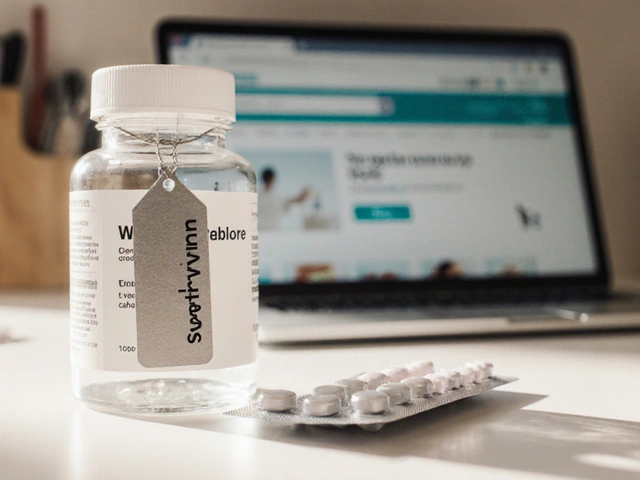Naltrexone: what it does and who it helps
Ever wondered how some medications help stop cravings for alcohol or opioids? Naltrexone is an opioid antagonist used to reduce cravings and block the high from opioids. Doctors often prescribe it for alcohol dependence and to support recovery from opioid use disorder. It won’t make you sleepy or addictive, but it does need careful timing and monitoring.
How naltrexone works and forms
Naltrexone attaches to opioid receptors in the brain and blocks them. If someone takes opioids while on naltrexone, the usual euphoria won’t happen. That’s useful for preventing relapse. The drug comes as a daily oral pill (usually 50 mg) and as a monthly injectable shot (380 mg, brand name Vivitrol). There’s also a low-dose naltrexone (LDN) approach used off-label for some pain and immune issues, but evidence for those uses is limited.
Which form is right depends on your situation. Pills are easier to stop if side effects appear. The monthly shot helps with adherence if remembering a daily pill is hard. Talk with your provider about pros and cons for your case.
Dosage, starting rules, and safety
Before starting naltrexone, you must be opioid-free. If you aren’t, naltrexone can trigger sudden and severe withdrawal. For short-acting opioids, clinicians usually wait 7–10 days after the last dose. For methadone or long-acting opioids, the wait is often longer. For alcohol use, you generally don’t need opioid abstinence before starting.
Common side effects include nausea, headache, fatigue, and dizziness. Naltrexone can raise liver enzymes, so providers check liver tests before starting and periodically after. It’s not recommended in active hepatitis or severe liver disease. Pregnant people should discuss risks and benefits with their clinician.
One key safety point: if you take naltrexone and later need emergency opioid pain relief (for surgery or injury), standard opioids may not work. Tell all your healthcare providers that you take naltrexone so they can plan pain control safely. Carry a medical card or wear an alert bracelet if needed.
Low-dose naltrexone (LDN) at 1–4.5 mg is sometimes used for chronic pain or autoimmune symptoms. Some patients report benefit, but large, high-quality trials are limited. Treat LDN as experimental and discuss it with your doctor before trying it.
What to expect during treatment: cravings often fall within days to weeks. If you find side effects troublesome or cravings persist, your clinician can adjust the plan or suggest combined therapy—medication plus counseling tends to work best. Regular follow-up, liver tests, and honest talk about any opioid use are the practical steps that make naltrexone safe and effective.
If you’re considering naltrexone, ask your prescriber these quick questions: Do my liver tests look okay? How long must I be opioid-free before starting? Which form do you recommend and why? With clear answers, naltrexone can be a strong tool in recovery and relapse prevention.
This article dives into the world of affordable Revia online, offering a detailed look at its medical benefits, side effects, and drug interactions. Learn about the most common dosages and recommendations for using Naltrexone effectively. Discover tips for finding this medication online responsibly and safely. A must-read for anyone considering or currently taking Revia.
View Details

